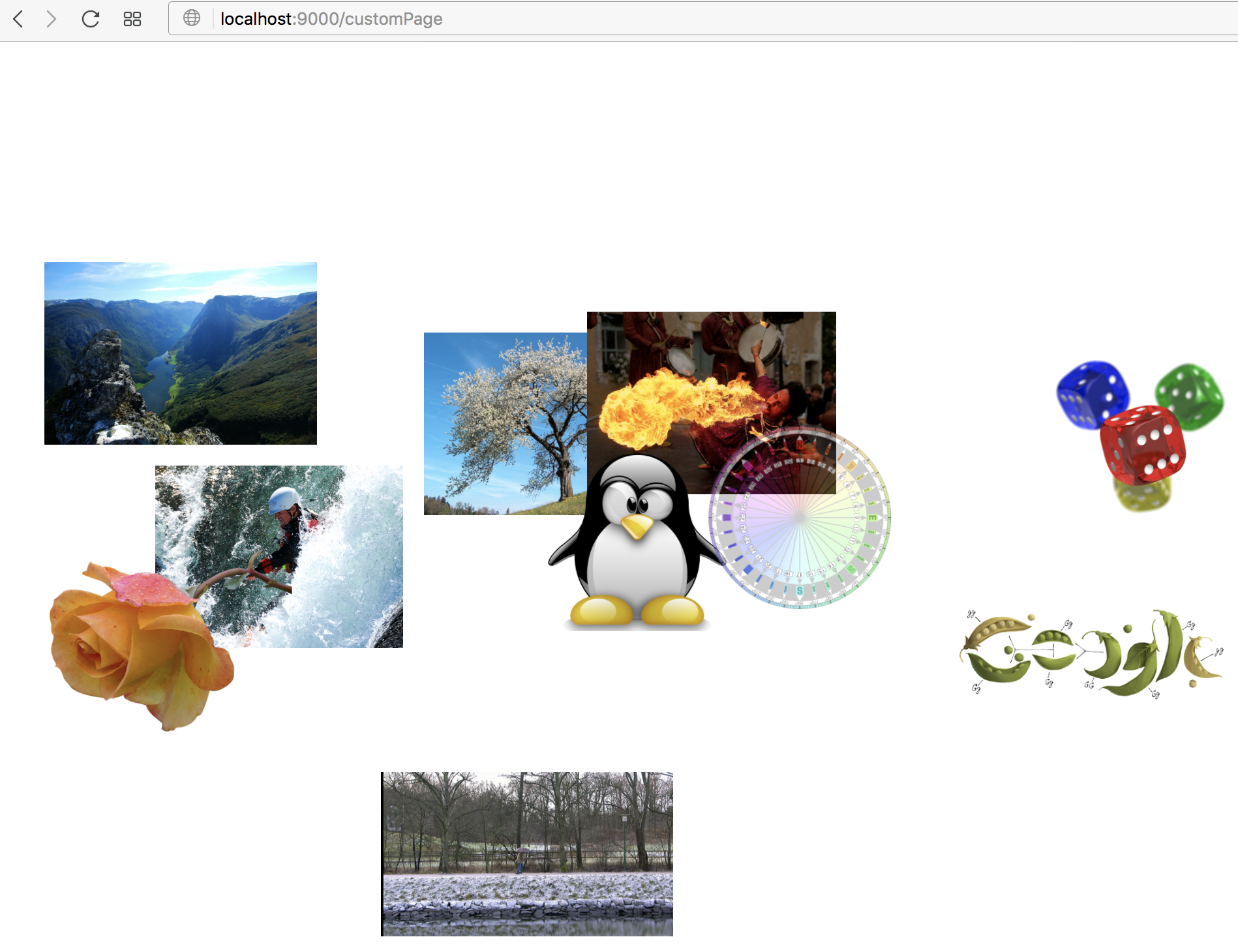Custom Page
Create and use a Custom Page.
The example is based on DemoResultClient from scala-adapters.
The Custom Page displays the incoming images at random positions and in random sizes.
Constraints
- You have created the project with scala-adapters-g8.
- You have your Job Results ready (job-results).
- A basic understanding of Type Classes in Scala (see scala-type-classes).
Shared Data
We can reuse /shared/src/main/scala/shared/GetStartedResult
Create HtmlElement
First we create the HTMLElement with for the image /client/src/main/scala/client/GetStartedClient.scala
case class ImageElem(getStartedResult: GetStartedResult) {
@dom
lazy val imageElement: Binding[HTMLElement] =
<img style={randomImgStyle} src={getStartedResult.imgUrl}/>
...
}randomImgStyle creates the random position and in random size of the image.
Extend the UIStore
We extend the UIStore with UIGetStartedStore
trait GetStartedUIStore
extends UIStore {
protected def getStartedUIState: GetStartedUIState
// type class instance for ImageElem
implicit object concreteResultForImageElem extends ConcreteResult[ImageElem] {
override def fromJson(lastResult: JsValue): JsResult[ImageElem] =
Json.fromJson[GetStartedResult](lastResult)
.map(ImageElem)
}
// provide a function to update the ImageElems from the ConcreteResults
def updateImageElems(lastResults: Seq[JsValue]): Seq[ImageElem] = {
ToConcreteResults.toConcreteResults(getStartedUIState.imageElems, lastResults)
}
}The idea of a UIStore is, that changing the UIState is done just in one place.
Create the Client
case class GetStartedClient(context: String, websocketPath: String)
extends AdaptersClient
with GetStartedUIStore {
// init the custom UIState
val getStartedUIState = GetStartedUIState()
// create the websocket
private lazy val socket = ClientWebsocket(uiState, context)
@dom
protected def render: Binding[HTMLElement] = {
socket.connectWS(Some(websocketPath))
<div>
{imageContainer.bind}
</div>
}
@dom
private def imageContainer = {
val lastResults = uiState.lastResults.bind
val imageElems = updateImageElems(lastResults)
<div>
{Constants(imageElems: _*)
.map(_.imageElement.bind)}
</div>
}
}This is more or less a composition of HTMLElements, done with Binding.scala.
Here is a small intro to Binding.scala binding-google-maps.
Update Client Application
We have to update our client slightly /client/src/main/scala/client/GetStartedClient.scala
...
case CUSTOM_PAGE =>
GetStartedClient(context, websocketPath).create()
...As we have now our implementation for our CUSTOM_PAGE.
Check Result
Running the Project and running the Job, should give you this:
